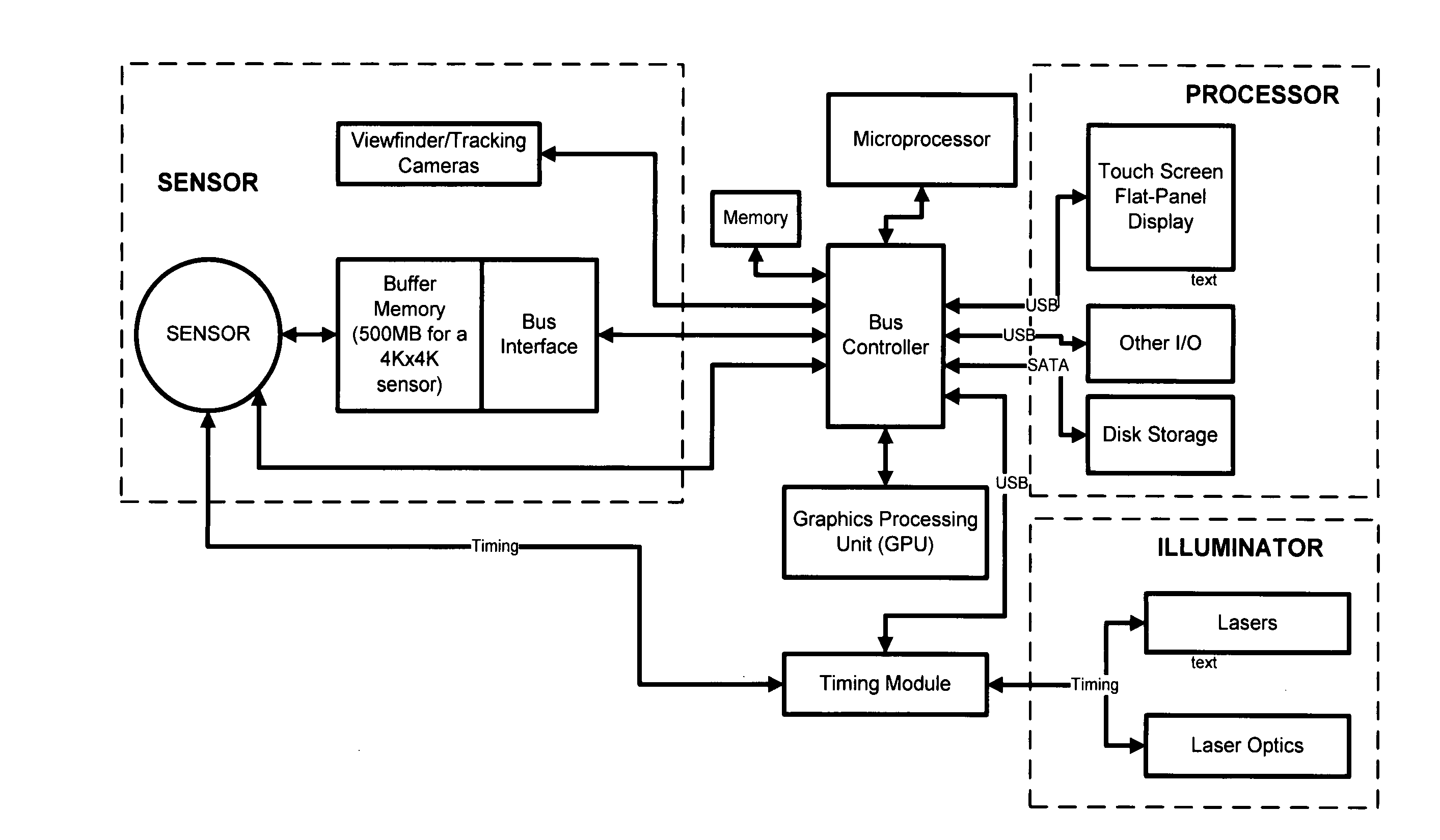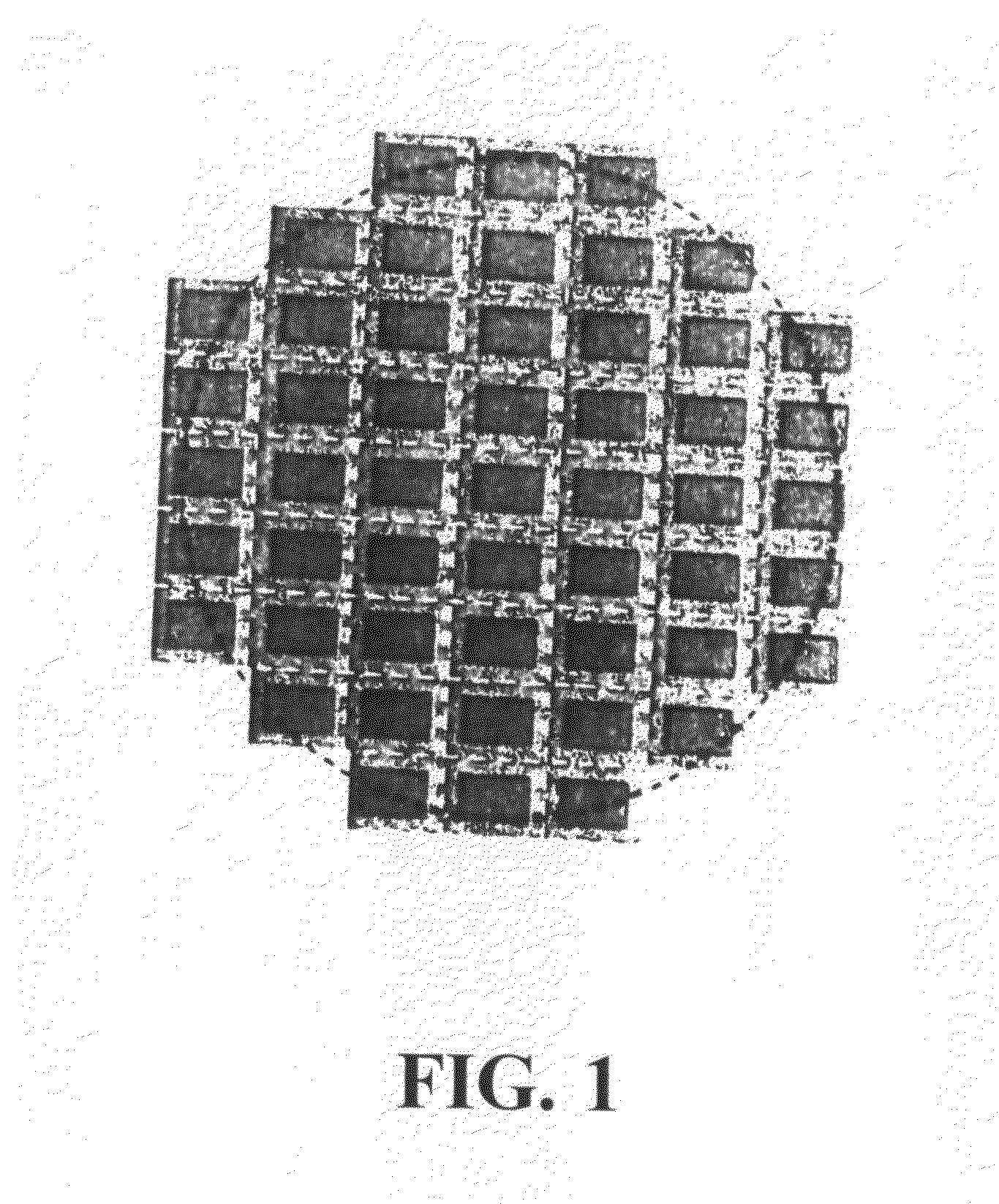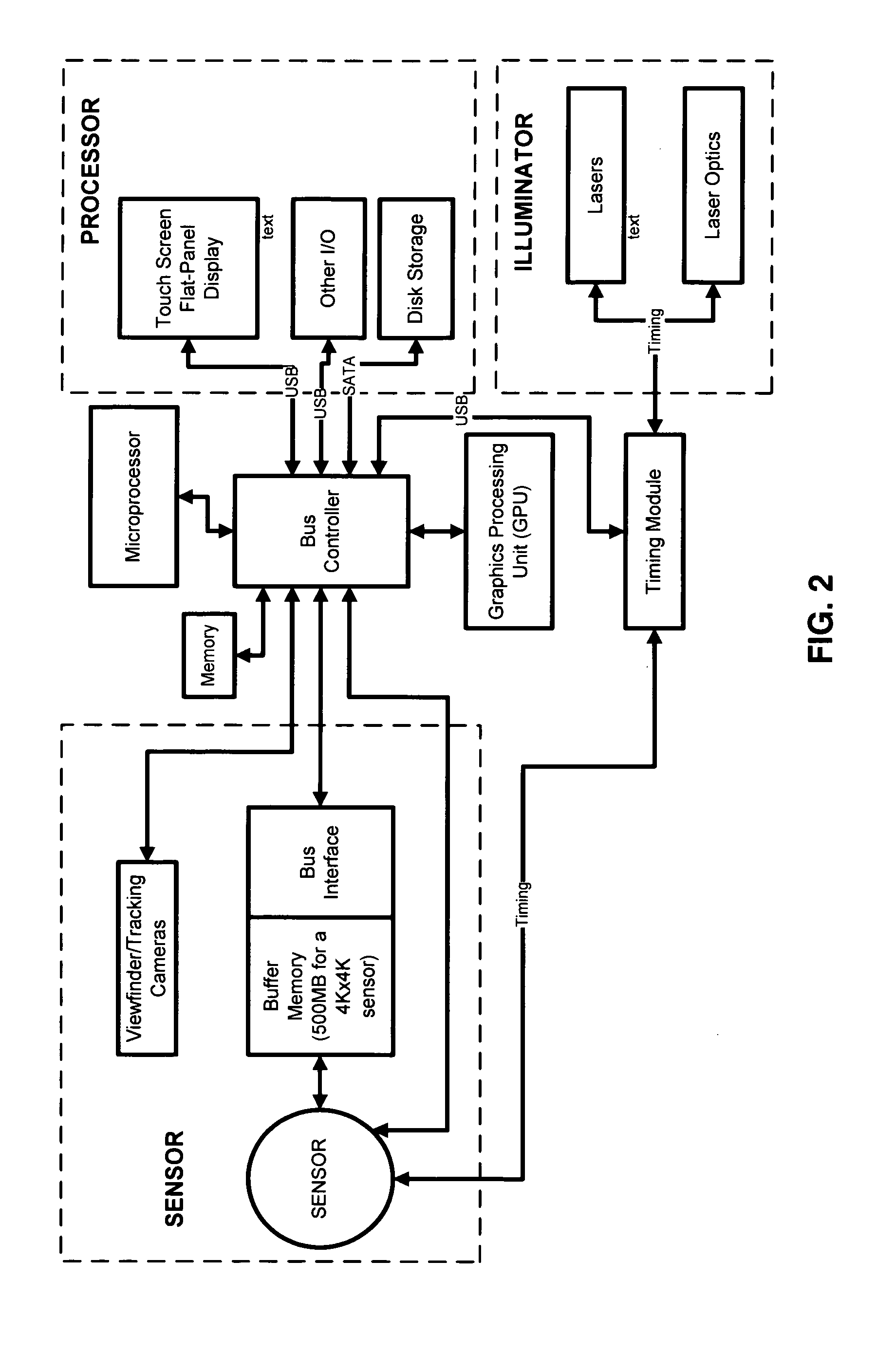High resolution 3-D holographic camera
a holographic camera, high-resolution technology, applied in the field of cameras, can solve the problems of limited 3-d depth resolution of the holographic scene in practice, the need for illumination scene, and the limitation of being able to record only static scenes, so as to reduce the amount of data used, reduce oscillations, and efficiently generate the complex reference phase
- Summary
- Abstract
- Description
- Claims
- Application Information
AI Technical Summary
Benefits of technology
Problems solved by technology
Method used
Image
Examples
Embodiment Construction
Sensor and Processor
[0022]A preferred embodiment of the present invention includes a tiled sensor. A layout of the sensor is shown in FIG. 1. The sensor is built from commercial chips. The processing electronics is shown in FIG. 2. A major advantage of the approach used by Applicants is that the reconstructor processes phase / amplitude gradients with a special algorithm. The algorithm is an extension of the mathematical approach applied to adaptive optics, using a shearing interferometer wavefront sensor. It is very computationally efficient, does not require phase unwrapping, and its manipulations are performed directly on the desired complex amplitudes.
[0023]Preferred embodiments of the present invention includes three beamlets (formed using a single laser source), separated by shear distances. These beamlets propagate toward the target, overlapping, and interfere on the target, producing fringes. The reflected, optical field directly contains information on the target Fourier spec...
PUM
 Login to View More
Login to View More Abstract
Description
Claims
Application Information
 Login to View More
Login to View More - R&D
- Intellectual Property
- Life Sciences
- Materials
- Tech Scout
- Unparalleled Data Quality
- Higher Quality Content
- 60% Fewer Hallucinations
Browse by: Latest US Patents, China's latest patents, Technical Efficacy Thesaurus, Application Domain, Technology Topic, Popular Technical Reports.
© 2025 PatSnap. All rights reserved.Legal|Privacy policy|Modern Slavery Act Transparency Statement|Sitemap|About US| Contact US: help@patsnap.com



